In our most recent research study, we propose that spiritual healing sites may be fertile ground for the discovery of new antibiotic-producing microorganisms. (Quinn & Harris, 2025)
Streptomyces, a genus of filamentous bacteria within the phylum Actinobacteria, are prolific producers of antibiotics, antivirals, anticancer, antiparasitic, and antifungal drugs. Together with other Actinobacteria, they account for the majority of current antibiotics. However, as early as the 1970s, scientists became concerned that the antibiotic discovery process was in trouble due to the repeated rediscovery of known antibiotic-producing organisms and their compounds. Since then, efforts to address the gap in the antibiotic discovery pipeline have faced significant challenges.
Initially, it was thought that industrializing the antibiotic discovery process - by modifying core units of previously discovered antibiotics – could provide a solution. However, this approach yielded poor returns on investment because the antibiotic discovery process is not that easily scalable. In addition, antibiotic resistance had already been reported for many of the core antibiotic templates, and many of the new compounds were either too unstable or toxic.
Fortunately, the discovery of antibiotic-producing microorganisms in environments previously considered uninhabitable has breathed new hope into the discovery process. It is thought that the physiological adaptations of antibiotic-producing microorganisms to extreme environments – such as deserts, hot springs, alkaline salt flats, or arid regions – may induce the expression of potentially new antibiotics (with significantly, enough differences in core structure that diminish the possibility of early antimicrobial resistance). Similarly, organisms living in symbiotic or endophytic relationships with animals and plants are subject to physiological pressures that may yield unique compounds.
These extreme and unusual habitats are also closely tied to traditional medicines, many of which originate from similar environments. For instance, Streptomyces sp. strain Y3111, isolated from the traditional Chinese medicinal plant Heracleum souliei, produces pluramycin analogues. Likewise, isolations from the traditional medicinal plant Edelweiss (Leontopodium nivale ssp. alpinum) have identified nine Streptomyces spp. bacterial endophytes. Many of these traditional medicines are also linked to specific regions, soils, plants, and practices, often interwoven with spiritual beliefs.
Given the overlap between extreme environments and culturally significant sites, our research group investigated the characteristics of spiritual healing areas. Specifically, we propose that drug-producing microorganisms, such as Streptomyces, are not only associated with traditional medicines but also strongly linked to spiritual healing sites. This hypothesis arose from identifying shared characteristics between regions associated with Streptomyces isolation and spiritual healing sites. Our hypothesis has since evolved into a potential explanation for the reputed healing properties of several spiritually significant sites worldwide.
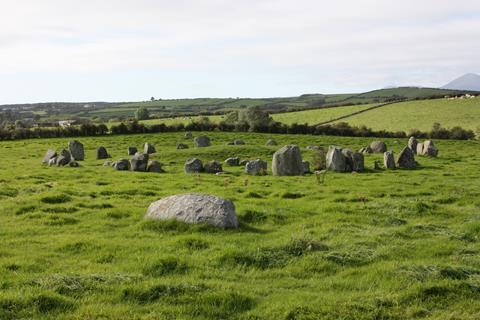
In both the north and south of Ireland, where our studies of antibiotic-producing microorganisms began, traditional medicines are often intertwined with spiritual practices. While some may view spiritual and cultural contexts as distractions from biochemical or physiological discoveries, others, including myself, see them as opportunities to explore disease and recovery from a fresh perspective.
My (GQ) initial recognition of a potential connection between Streptomyces and spiritual healing sites emerged around 2016. At the time, Paul Dyson, head of the Streptomyces research group at Swansea University, was collaborating with Chinese colleagues to investigate physiologically extreme environments for novel Streptomyces species. Having extensively studied the flora of the West Fermanagh Scarplands, I identified this region as ecologically distinct due to its alkaline grasslands juxtaposed with acidic bogs. Furthermore, the presence of karst (limestone) features indicated that this area could be an ideal site for isolating new Streptomyces species.
Initially, I (GQ) had planned to sample limestone pavements adjacent to upland bogs in the West Fermanagh Scarplands, hypothesizing that pronounced transitions between ecological niches could harbour stressed microorganisms producing novel compounds. However, local residents urged me to test soil associated with spiritual healing practices.
Though initially sceptical, I analysed this soil and identified several Streptomyces species. Concerned about potential scepticism in scientific journals, I omitted the spiritual aspects of the healing tradition in the initial scientific report, framing the findings within the context of folk medicine to enhance credibility. However, as previously noted, these spiritual and medicinal elements are deeply interwoven in this region, making it challenging to convey this context to a microbiology audience.
Ultimately, we isolated several Streptomyces species from this traditional soil cure. One, Streptomyces sp. myrophorea (Figure 1), inhibited the growth of multiple clinically relevant ESKAPE pathogens (Enterococcus faecium, Staphylococcus aureus, Klebsiella pneumoniae, Acinetobacter baumannii, Pseudomonas aeruginosa, and Enterobacter spp.), including carbapenem-resistant Acinetobacter baumannii (CRAB), vancomycin-resistant Enterococcus faecium (VRE), and methicillin-resistant Staphylococcus aureus (MRSA). Additionally, we identified six other Streptomyces species: two with activity against MRSA and Pseudomonas aeruginosa, two with inhibitory effects against fungi and viruses, and two producing antibiotic potentiators (compounds that enhance antibiotic efficacy). We also isolated Streptomyces sp. CJ13, which exhibited both antibiotic and antifungal properties.
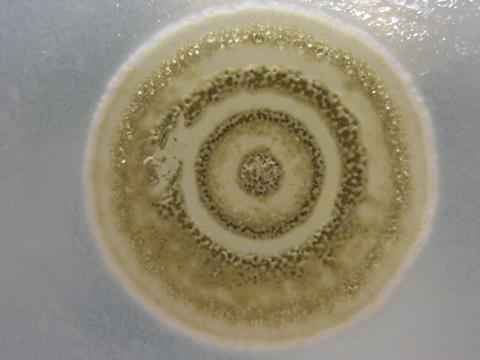
However, I later realized that I would be doing a disservice to my beliefs and long-standing cultural traditions if I did not acknowledge all the factors associated with these discoveries. It subsequently dawned upon me that other sites of spiritual significance, which share similar geological characteristics, such as karst landscapes or alkaline soils, may also be associated with the presence of one of the world’s leading antibiotic producers (namely Streptomyces), and this may partly explain their healing reputations.
The most unique contribution that spiritual healing sites can make to current conversations about the future design of antimicrobial chemotherapy is their distinctive cultural and spiritual identity, which extends beyond purely biochemical and physiological considerations. Although not immediately obvious, understanding the spiritual context of healing could provide valuable insights – not only into the rich potential of spiritual sites as a source of antibiotic-producing microorganisms but also into a deeper understanding of the concept of disease and its treatment.
Streptomyces in healing traditions
Traditional medicine on the island of Ireland is commonly referred to as “the cure.” These cures, typically targeting specific diseases or related conditions, are passed down through generations in a lineage thought to extend back to the Druids – or possibly further. In addition to the cure at Boho, there are numerous reports of cures across Ireland, from holy soils and wells to ancient spiritual sites. However, this subject is typically the domain of sociological or historical scholars.
One of the earliest documented ethnopharmacological cures with proven pharmaceutical activity in extracts is moonmilk. This substance, found glistening on cave walls, comprises bacteria (including Streptomyces species) embedded in a matrix of dissolved rock and calcite crystals. Although moonmilk is present in Irish caves, scientific evidence of its antimicrobial potential has primarily come from Belgium’s Grotte des Collemboles, where extracts have demonstrated inhibitory effects against both Gram-positive and Gram-negative bacteria.
Interestingly, caves – long associated with religious and ceremonial roles – are also rich sources of novel Streptomyces. For instance, cervimycins, produced by Streptomyces tendae and isolated from a Neolithic cave (Grotta dei Cervi) in Italy, exhibit antibacterial activity against methicillin-resistant Staphylococcus aureus (MRSA) and vancomycin-resistant enterococci (VRE). This cave is renowned for its abundance of prehistoric wall paintings, including the iconic depiction of a dancing god or sorcerer (Figure 2).
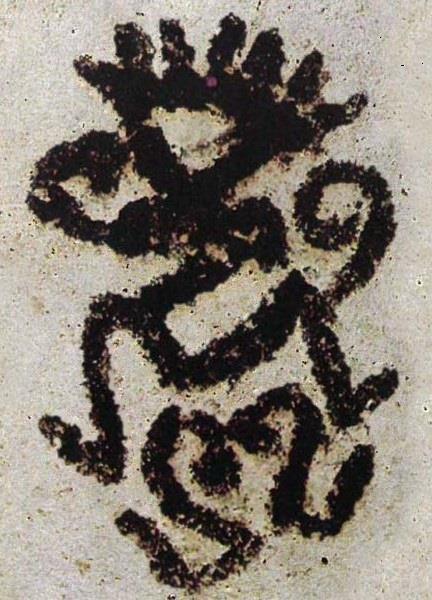
It is unsurprising that some of the oldest medical traditions are also tied to soils. For example, Kisameet clay from Canada has been used for millennia by the Heiltsuk people to treat wounds and various skin conditions. This clay inhibits the growth of all six clinical ESKAPE pathogens. Most relevant to this discussion, the clay also harbours numerous Streptomyces species.
It is important to note that soils linked to traditional medicine differ from previous random soil discoveries of antibacterial organisms in that they are often associated with distinct environmental factors, such as specific minerals, high pH, or unique geographic settings.
Streptomyces from sites of spiritual significance
Streptomyces species have been isolated from spiritually significant sites around the world, including:
- Ancient Egyptian tombs, such as Tell Basta Tombs in Zagazig City, Egypt, yielding 127 actinomycete isolates.
- Cave Church of St. Peter and Paul in Serbia, a site of Orthodox Christian pilgrimage
- Altamira Cave in Spain, known for prehistoric art tied to spiritual practices.
- The Atacama Desert, which holds cultural importance for indigenous Atacameño and Aymara communities who have historically used its soils and plants for medicinal and ritual purposes.
- Tama Graveyard in Tokyo, Japan where Streptomyces cinerochromogenes and S. lavendulae subsp. grasserius (Kuchaeva et al., 1961) were isolated, which produce cineromycin B and grasseriomycin, respectively.
- Streptomyces parvus strain C05, from a Roman tomb in Spain, produces granaticin.
- Streptomyces tendae strain HKI 0179, from the ancient Grotta dei Cervi, Italy, produces cervimycins.
Common motifs between spiritual sites and Streptomyces bioprospecting
The common motifs between spiritual healing sites and areas where new Streptomyces species are discovered include nutrient-poor soils or substrates, extreme or unusual environments, freshwater springs, and a long-standing history of traditional healing.
Poor soils and strong beliefs
Several sites around the world linked with spiritual healing are associated with nutrient-poor soils or impoverished regions. This is particularly true of karst (limestone) environments, such as the Gave de Pau river valley in France, which includes the Grotto of Massabielle at Lourdes, famously carved into the local bedrock, or the Santuario de Chimayó in New Mexico. Other notable sites include the limestone-based Medjugorje in Croatia; Bom Jesus da Lapa in Brazil; Fatima in Portugal; the Mayan pilgrimage site of Chichén Itzá in Mexico (Cenote Sagrado) and the Ouachita Mountains in the USA, revered by the Quapaw tribe for the healing properties of their soils and springs. These karst environments may harbor an abundance of Streptomyces due to their nutrient scarcity.
These healing links also extend to limestone powders associated with the graves of saints, such as Gerlachus of the Netherlands, St. Mort in Haillot, Belgium (also associated with an ancient standing stone), St. Catherine in Montfort, Netherlands, and the Cueva de los Tayos in the Andes, a site of Shuar spiritual practices.
The power of strong belief
In addition to agriculturally and nutritionally poor soils, many spiritual healing sites are also characterized by strong local belief systems. This may seem logical, though the connection between spiritual belief and healing is not immediately obvious. However, the mind – or belief – plays a significant role in human immunity and the ability to cope with disease. All clinical drug trials use a placebo control to account for the physiological effects of strong beliefs. The influence of positive belief or optimism on health is thought to be due, in part, to the activity of the hypothalamic-pituitary-adrenal (HPA) axis (a system regulating stress and immune responses). Thus, even if a spiritually based cure lacks measurable pharmaceutical activity, the ritual could be curative for individuals with strong beliefs.
This may partly explain why many spiritual cures, including the soil from Boho, include an injunction to reflect on the spiritual aspects of the healing process and to offer prayers
Continuity of belief across millennia
Another theme shared by many folk medicines that incorporate spiritual elements is their physical proximity to older traditions. For example, Boho (Sacred Heart) church graveyard, where Streptomyces sp. myrophorea was discovered, is built upon an older structure believed to be a Druid amphitheatre. This site is in close proximity to the Reyfad Stones, a group of Neolithic stones with ceremonial “cup and ring” markings that may date back approximately 4,000 years. Indeed, many places of worship in Ireland during the Penal Laws, often described as mass altars, were located on or near older pre-Christian sites.
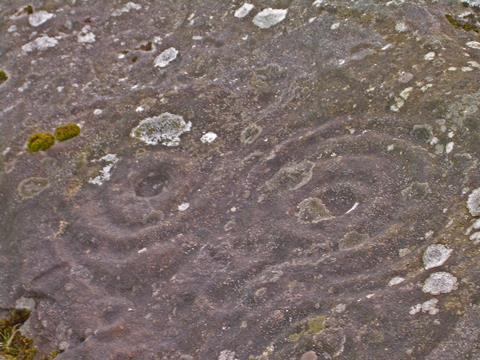
Indeed, many healing sites worldwide are constructed on previous healing sites. In New Mexico, the sacred soil from the Santuario de Chimayó sits atop the remains of an older site used by Tewa Indians: an inactive hot spring once revered as a source of healing. The native belief was that healing spirits in the sacred hills manifested through hot springs, which eventually dried up, leaving behind healing earth.
In Israel, the Pool of Bethesda in Jerusalem, tied to Christian tradition where Jesus is said to have healed a paralyzed man, was constructed over a healing temple dedicated to the Greco-Roman healing god Asclepius, built during the Hellenistic period and later adapted for Roman and Jewish use.
In Egypt, St. Catherine’s Monastery, a destination for pilgrims seeking healing, lies at the foot of Mount Sinai, where Moses received the Ten Commandments. Long before, pre-Christian Bedouin and Nabataean peoples revered the mountain as a sacred high place, possibly linked to lunar or solar deities associated with healing.
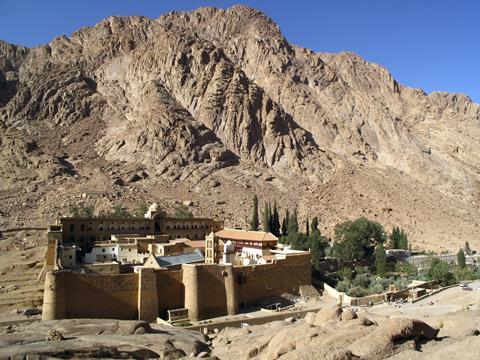
In Turkey, at Ephesus, a spring at the House of the Virgin Mary is credited with healing properties. This site was preceded by pre-Christian worship at the nearby Temple of Artemis – one of the Seven Wonders of the Ancient World – a fertility and healing goddess whose cult venerated sacred springs and groves.
Building on previous traditions can be viewed from several perspectives. Scientifically, it may suggest that knowledge has evolved or been built upon over time. A secular view could posit that ancient peoples discovered areas with healing soil or water. In an era when real cures were scarce, such discoveries might have been seen as a reprieve from death, thus deemed sacred or spiritual. This memory could have persisted across generations, even if the specific origins became obscured or transformed.
Into the mystic: can a greater understanding of the spiritual or cultural context of traditional medicines provide benefits to healing therapies?
While similarities between Streptomyces bioprospecting and spiritual healing sites may lead to new antibiotic sources, their unique value may also lie in understanding the cultural and spiritual contexts surrounding them. The essence of these sites extends beyond literal interpretations, encompassing nuanced cultural meanings. Modern assumptions about how ancient civilizations utilized antibiotics may be inaccurate, as antibiotic-producing bacteria, such as Streptomyces, often produce insufficient antibiotics in natural environments to directly impact human physiology. Instead, these bacteria or their metabolites, associated with traditional medicines, may function through alternative mechanisms. For instance, Actinobacteria, including Streptomyces, are known to engage in interspecies signalling, potentially enhancing antibiotic production in neighbouring bacteria. Such interactions could influence the host’s immune microbiome or other immunological systems. Alternatively, these bacteria might resemble Mycobacterium vaccae, a soil bacterium that triggers serotonin release in the brain, suggesting broader physiological effects.
Scientists typically employ a reductionist approach, purifying and isolating antibiotics discovered in nature. However, this approach may overlook the broader molecular ecology of antibiotic production. Antibiotics are rarely produced in isolation; rather, they are accompanied by secondary metabolites that enhance their efficacy. These include biosurfactants that improve antibiotic absorption, pigments that increase potency, reducing agents that prevent oxidation, and siderophores – metal-scavenging compounds or chelators – that conjugate with antibiotics to enhance their activity and can potentially sensitize other competitor bacteria to infection by phages.
Similarly, many traditional cures with spiritual connections, such as those practiced in Boho, adopt a holistic approach to healing. Incidentally, the term “holistic” derives from the Old English word holi, meaning holy, healthy, or whole. Indeed, many spiritual traditions emphasize healing the entire person – body, mind, and spirit – addressing both the disease and the dis-ease. Holistic approaches are quite common in ethnopharmacological practices which combine multiple therapies. Researchers are increasingly recognising the value of combined therapies, as seen in tuberculosis (TB) treatment, where four antibacterials – isoniazid, rifampicin, ethambutol, and pyrazinamide – are used to prevent antimicrobial resistance during prolonged treatment. Similarly, for severe bacterial infections, physicians often combine beta-lactams with aminoglycosides or beta-lactamase inhibitors.
Moreover, scientists are beginning to appreciate that combinations of compounds, such as other secondary metabolites – not all necessarily antimicrobial – can reduce antibiotic resistance. For example, moonmilk from Bolshaya Oreshnaya Cave in Siberia contains a mixture of four compounds – cyclodysidin D, chaxalactin B, stylissazole B, and gyrophoric acid – that collectively exhibit activity against Gram-positive and Gram-negative bacteria and fungi. Similarly, a combination of pyrrolopyrazines and benzene derivatives from two Bacillus species in Krubera-Voronja Cave in Georgia showed strong activity against Gram-positive microorganisms.
The perception of form
Another motif shared between Irish healing/folk traditions and Streptomyces is shape-shifting, symbolizing adaptability and transformation. In Irish folklore, shape-shifting often appears in tales of healers or deities who change form to restore balance, reflecting the holistic view of health as a dynamic state. Similarly, Streptomyces exhibits remarkable morphological plasticity, adopting distinct physiological forms that influence antibiotic production. Previously, researchers had identified two primary physiologies: planktonic (in liquid culture) and sessile (on agar plates), each producing unique metabolite profiles. However, recent studies describe two additional forms: exploratory (a motile, elastic physiology) and biofilm (a sessile, structured community), both capable of generating novel (or silent) antibiotics. Furthermore, Streptomyces adapts its morphology to environmental substrates, such as porous rock, sand, or clay found in sacred sites like caves or holy wells, altering its metabolite output. By culturing Streptomyces under conditions mimicking these spiritually significant environments, researchers could unlock a broader range of antibiotics, including cryptic or silent metabolites – compounds not expressed in standard lab settings – enhancing bioprospecting efforts.
One of the most enigmatic motifs shared between Streptomyces and Irish healing traditions is that of cycles, blending biological rhythms with cultural symbols of renewal. In Streptomyces, antibiotic production often coincides with sporulation, where older cells sacrifice themselves to nourish a new generation, forming concentric growth rings on a petri dish. This process is unpredictable, governed by complex stress responses triggered by factors like phosphate limitation, desiccation, or mineral availability, which remain partly mysterious. These biological cycles resonate with Irish healing practices such as pattern days, when annual rituals align with seasonal shifts – potentially enhancing microbial activity in surrounding soils.
Strangely, while laboratory studies often explore static environmental conditions, they rarely mimic the dynamic day/night, temperature, or wavelength cycles of natural habitats. For instance, alternating daytime and nighttime temperatures has induced sporulation in a desert Streptomyces species, suggesting that such rhythms could activate silent gene clusters. Could replicating these cyclical conditions unlock novel antibiotics from soils near sacred locations, revealing hidden dimensions of both microbial and cultural mysteries?
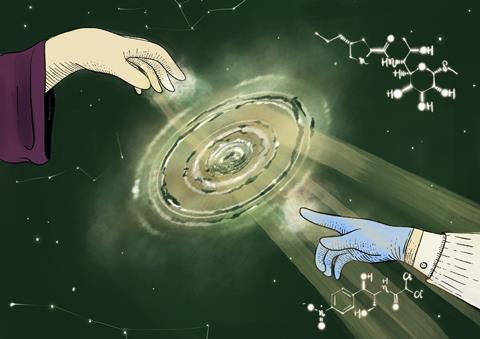
Future considerations
There are several other facets of the discoveries of Streptomyces in the folk cures in Boho and further afield that remain mysterious. Two of the main questions we are trying to explore are
- The level of adaptation of Streptomyces to radon, a radioactive decay element. We already know from sequencing that many of the Streptomyces strains we looked at have an abundance of DNA repair enzymes, radioprotective proteins, and melanin. We were wondering if these traits merely shield against radon’s low-level radiation, or could they harness its energy, as melanin-rich fungi do in Chernobyl’s reactor walls? Might porphyrin-like pigments, encoded in their genomes, enhance antibiotic stability or radiation resistance?
- Streptomyces sp. myrophorea emits a fragrant volatilome – volatile organic compounds, some of which are specifically detectable by the human nose at 10 parts per trillion! Is there a physiological or immunological interphase with these compounds?
Conclusions and recommendations
Common motifs between Streptomyces and sites of spiritual healing may help with the discovery of new sites for bioprospecting. Although there may be a temptation to dismiss the spiritual nature of the healing sites, it is important that researchers begin to understand these in the appropriate cultural and spiritual context. This may help future researchers assess a broader conceptualisation of diseases and their treatments, perhaps leading to the formulation of the next generation of antibiotic therapies.
References








No comments yet